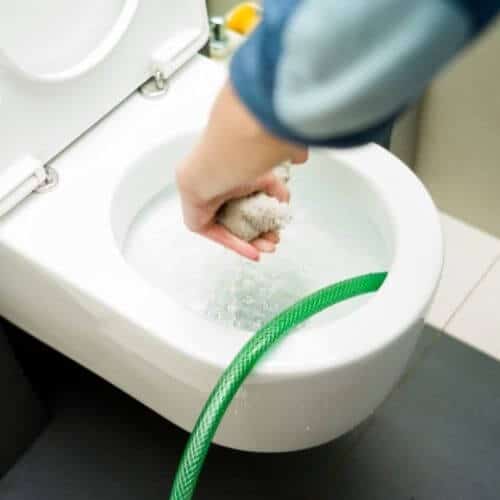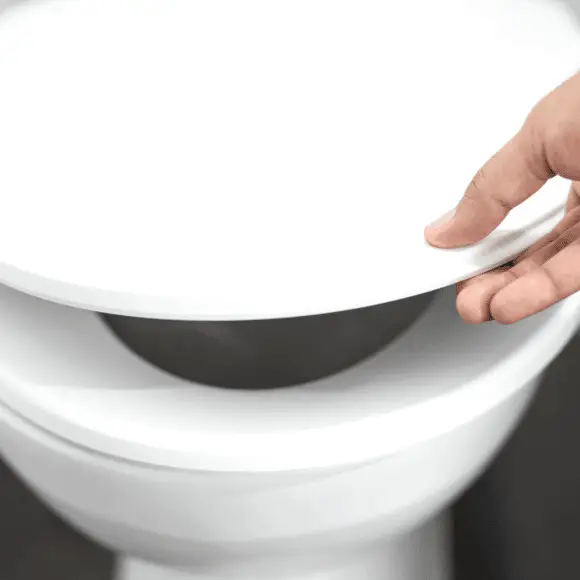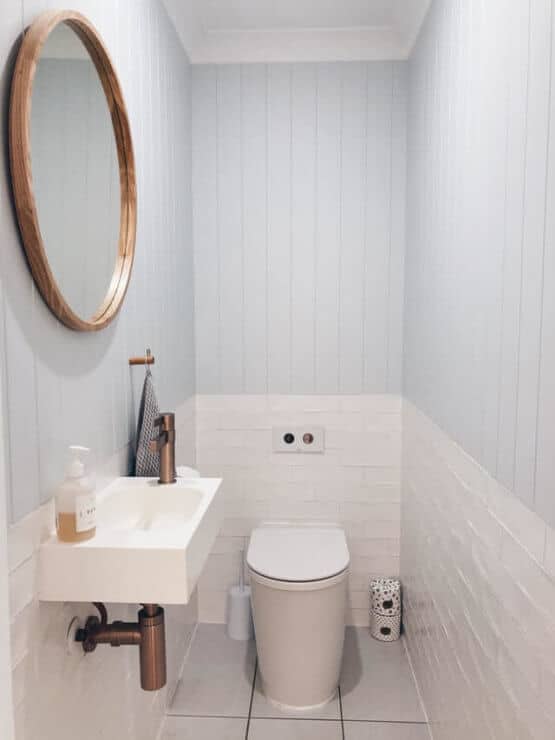Low-flow toilets are among hi-tech designs that have many benefits. However, this doesn’t mean they are without issues. There are some low flow toilet problems that cannot be ignored, especially if you’re considering buying one of these units.
One of the main things every homeowner needs to make sure is to know what to expect when they buy new units and furniture. This is especially important with essential items such as toilet.
In the latest years, many people opt to buy low-flow toilets due to many benefits they provide them with. However, knowing how to fix some common low-flow toilet problems can save you hundreds of dollars, especially in the long run.
If you’re planning on buying one of these units, here is what you can expect:
Common Low Flow Toilet Problems and How to Fix Them
Low-flow toilets work with less water, helping you to save water. This will not only help the environment but also lower your utility bills. However, this also means some low-flow toilet problems are to be expected.
The most common low-flow toilet problems include:
- Clogs, which are common whenever these toilets are not working properly due to the lower amount of water they use.
- A distinctive and loud whooshing sound they make due to the pressure-assisted system that helps them operate.
- They might not eliminate the entire waste if your home already has low water pressure. As such, a single flush might not be enough.
Fixing the Problems
Some low-flow toilet problems, such as the louder flushing noise, you’ll have to live with. No type of toilet is perfect. This is simply how this type of toilet works.
Fortunately, many others you can fix on your own. All you need to know is a few tips on how to unclog and adjust the toilet. Don’t worry – most fixes are not as challenging as they might sound to inexperienced homeowners.
This is how you can fix most issues:
How to Adjust a Low-Flow Toilet?
If you know how to properly adjust a low-flow toilet, you can ensure it has enough water to flush down all the waste. This will reduce the chances of clogs and fix most problems you might experience.
The exact process of adjusting the toilet will depend on the type of float ball or ballcock. The ballcock is located on the back of the toilet. In some cases ballcock could vibrate and produce a whistle sound.
This is how you can adjust a low-flow toilet depending on the type of the ballcock:
- Piston ballcock/plunger: This type of ballcock is commonly found in older toilets. It has a rather distinct shape, and it’s essentially a brass rod attached to a piston or a plunger. To make sure this type of float is adjusted, ben the brass flow upward – but be gentle. This will increase the water level stored in the tank. Just make sure the level is below the overflow tube.
- Brass diaphragm ballcock: This type of ballcock is very similar to the piston-style one. It also has a brass rod, but it uses a diaphragm instead of a piston. You can also adjust it in the same way.
- Plastic diaphragm ballcock: The same as the brass diaphragm, but made out of plastic. However, the adjustment process is rather different. You need to find a screw located on the top. It usually stands right where the brass rod pivots when the water fills. The water levels will rise when you turn the screw counterclockwise. Once again, take good notice. The water should never go above the overflow tube.
- Internal float fill valve: This type of valve features a rather compact design. The water level is controlled by a plastic float located inside the valve. To adjust it, twist the top of the fill valve counterclockwise to unlock it. After this, you can move the fill valve and this will help you adjust the water level. Don’t forget to turn the top clockwise to lock it back into place.
- Float–cup fill valve: This valve is similar to the internal float fill valve, but it is located on the fill shaft and not inside the tank. To adjust it, move the float cup up or down and pinch the metal spring clip.
- Floatless fill valve: Also known as a pressure-activated fill valve, it uses a pressure-sensing mechanism to know the exact water level. You can adjust it by turning the screw located at the top of the valve.
Sometimes, you might have a toilet tank that won’t fill with water – but this is an entirely different issue.
How to Unclog Low Flow Toilet?
If a clog does happen, you need to know how to deal with it before the damage gets out of hands. Here are a few things you can do:
- Turn off the water the moment you notice the toilet is clogged. Never continuously flush, as this will only lead to your toilet overflowing.
- Use a plunger. Pump the handle of the plunger for a while. This might take up to 10 minutes, but you should see the water starting to drain.
- You might also want to use solutions such as bleach. Just be careful about what you’re using and do your research. You might want to learn does bleach damage toilet bowls – more specifically, the type of toilet bowl you have – beforehand.
- There are some home remedies for a clogged toilet. However, be careful, as bleach isn’t the only chemical that might ruin your toilet bowl. A good and safe remedy is to pour a dishwashing soap and a pot of really hot (but not boiling) water. You might need to use a plunger afterward.
Also, you need to be mindful. Just because a toilet is overflowing doesn’t mean it’s clogged.
Low Flow Toilets Pros and Cons
Before you install a low-flow toilet, you need to know whether they are worth it. To realize this, you need to look into the pros and cons of these toilets.
While most people talk about the pros, cons are essential for realizing what low-flow toilet problems you can expect. Still, to keep things fair, we’ll mention a bit of both.
Here are some low-flow toilet pros and cons:
Pros of Low Flow Toilets
There are many benefits of low-flow toilets that make these units so popular. Below are some of the reasons why you might prefer this type of toilet over all others:
- All toilets have to meet federal WaterSense standards, as well as be certified as water-efficient. With low-flow toilets, this isn’t an issue, as they are working with less water than standard toilets. [1]
- Low-flow toilets can help you save money. If you use toilets that are up to the WaterSense standards, something all low-flow toilets are, you can save approximately $110 yearly on your water bills alone.
- The longer you use low-flow toilets, the more money you save – especially if you consider how long-lasting they are. A low-flow toilet can last up to three decades with proper maintenance!
- Low-flow toilets can add to your home’s resale value.
- Some states, counties, and cities offer a rebate if you replace your old, traditional toilet with a newer, low-flow model.
Cons of Low-Flow Toilets
Unfortunately, low-flow toilets also have some cons that are the cause of some problems we’ve discussed you can experience. This is what they are:
- As they don’t use as much water as standard toilets, they usually apply less pressure. This means low-flow toilets might struggle to remove all the waste and stubborn stains, especially compared to their standard counterparts. You might need a few flushes to ensure all heavy waste has been emptied from the bowl. As is easy to guess, this will reduce the toilet’s efficiency and your water savings.
- If you live in an older home, your fixtures might not work well with the low-flow fixtures. This is because low-flow toilets require the piping to be positioned at a specific slope and angle. Otherwise, they might not operate properly, as they work with the help of gravity and pressure. In general, the older the house, the higher the chances of you having to adjust or replace existing fixtures. As such, the installation can end up being quite expensive.
- They are louder than general toilets, which can make using the toilet during the night uncomfortable if you have light sleepers in your house.
- They are more prone to clogs than standard toilets due to their specific way of operating.
Do Low Flow Toilets Clog More Easily?

Low flow toilets are more prone to clogging, especially if you’re using older models. This is due to the lower amount of water they’re using, which might not be enough to push heavy waste.
In general, low-flow toilets use only 1.2 gallons of water per flush. This is less than standard toilets that use 1.6 gallons. However, this also means that you might need several flushes to get rid of everything. As such, the waste might clog the pipes, as the water pressure isn’t enough to push it out.
In fact, all these low-flow toilet problems related to clogging were noticeable even when these units were first introduced in the 1990s. In general, the smaller volume of water is inadequate to do an efficient job if you install the toilet with the older plumbing.
With newer piping, clogs are less likely to happen – but replacing the piping can cost you a hefty amount of money. Still, low-flow toilets causing sewer problems aren’t unheard of, at least not when you have older plumbing.
Bottom Line
In the end, no one can deny that there are many benefits to low-flow toilets, especially if you use them long-term. They can help you save water and money on your utility bills, and they are very environment-friendly.
In fact, this is precisely why you can get a rebate for installing such a toilet inside your home. Water waste is a huge problem, and it seems like homeowners are finally becoming more aware of the importance of using proper fixtures. [2]
However, this doesn’t mean that there aren’t some low-flow toilet problems worth discussing. This shouldn’t mean you won’t make a purchase. However, you need to know exactly what to expect when you want to change the type of your toilet.
In general, most problems arise from the low-flow toilet’s biggest advantage, and that is the lower amount of water used. Fortunately, with just a few tips and tricks, you can handle them on your own, without the need to pay for expensive repairs.

Michael Davis is a heating & plumbing expert who currently works as independent contractor in SC. He also writes for Plumbertip.
For almost 10 years he worked on various plumbing tasks across South Carolina.




